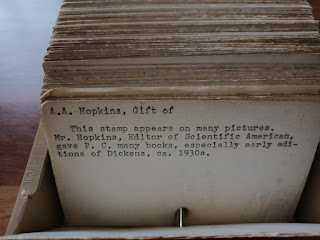Picture Collection Source Cards for Journals, Magazines and Serials

The Picture Collection began a Source Card file in 1929, soon after Romana Javitz became supervisor. It is still maintained today and is a rich resource, not just for tracing the original maker of a print or photo found in the files but also from an historical perspective . In addition to provenance, the cards reveal many of the addresses of the contributors, some only blocks away from the Picture Collection at 42nd and Fifth Avenue. Here is just a small sample from A to M of the variety of Source Card files documenting the Journals, Magazines and Serials that were clipped for circulation. Capitalized alpha indicators were written on the clipped images for tracing the source. Words on Pictures: Romana and the New York Public Library’s Picture Collection . edited by Anthony T. Troncale. New York: Photo | Verso Publications, LLC , 2020. ISBN 978-1-7346409-0-8 (hardcover) Identifiers ISBN 978-1-7346409-1-5 (eb...
